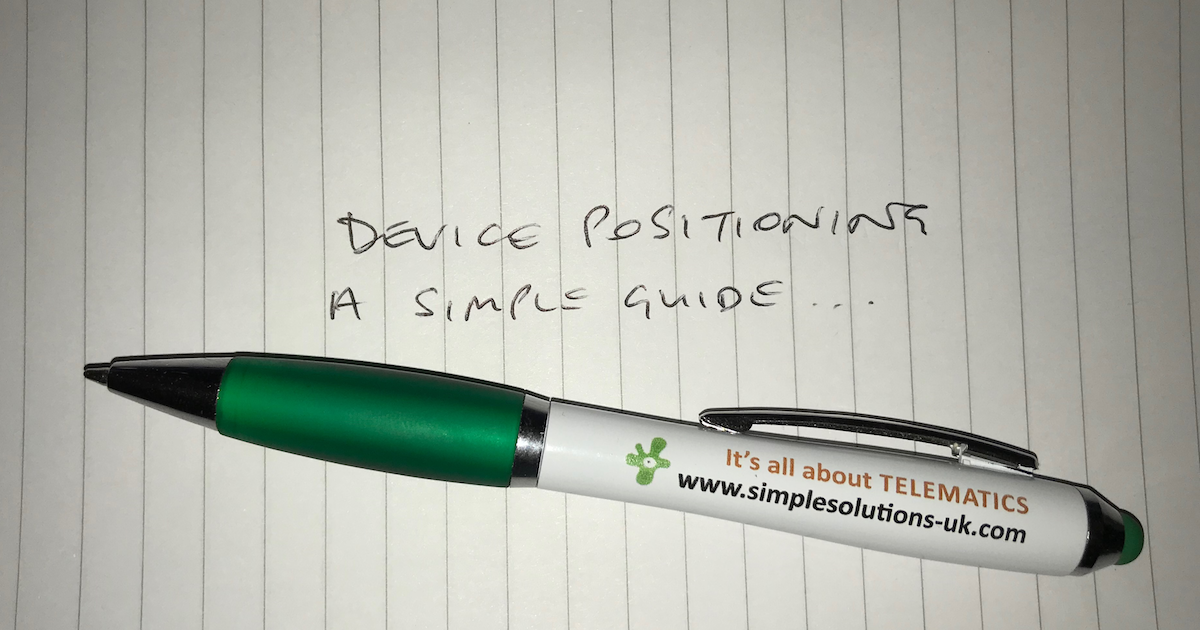News & Blog
Device Positioning – A Simple Guide…

Some simple guidelines to placing battery powered devices correctly.
First of all, let’s be clear, a device that relies on GPS and cellular signals is effectively a plastic box unless it can get access to those signals. All the time, effort and money spent on an application, configuration and overall solution could be wasted if those signals don’t make it too and from the device then the application will sit there waiting, reporting nothing.
So, we’ve put together some guidelines on positioning to give your solution the best possible chance, in this instance we’re talking about battery powered devices, where power management means that devices report infrequently in order to ensure longevity of the batteries, unlike ‘hard wired’ devices, that are powered by the host, and can report every few seconds or as needed and tend to stay awake for long periods.
Embedded antenna design is great these days, thanks in part to the developments of the mobile phone market but a standalone device doesn’t have the advantage of being able to be moved around in free space by a user to ‘find’ a good signal, so if we’re using devices with embedded antenna then we need to ensure that the positioning gives it the best chance of receiving and sending information.
Let’s consider the environment these devices are likely to find themselves in, hidden within partial metal boxes, with electronically and mechanically noisy equipment around them and (generally) moving, amongst urban canyons, areas of low signal and surrounded by other devices all competing for the same signals.
In any installation it’s always likely to be the GPS signal that’s going to be most challenging, GPS signal strength is low so if we use this as a guide to best installation then the cellular signal should be taken care of too.
When placing, most importantly, we should always ensure that the unit is correctly oriented with the side designed to face skywards doing so, if unsure please check with us or the device user guide. The use of aGPS (if available) will also improve the ability of the device to report its location, we can help you configure this feature if you’re unsure.
Next, we should look at where we’re placing the device, surrounding the unit in metal is going to greatly reduce the chances of the signal being seen, so try to place in as much open space as possible. Inside box section, spare wheels in wheel well and behind metal bulkheads are all unsuitable, as is hidden in the base of the rear passenger seating.
Placement is always going to be more important in battery powered hibernating devices, where reporting rate is low and where the device is often in sleep or low power modes.
A simple guide to placement in terms of good, ok and poor (bad) places within a vehicle are below:
Good:
- Externally on roof or boot lid – not very covert and generally not an option
OK:
- Windscreen or just behind
- Rear parcel shelf or just behind rear screen
- Inside the dashboard panels (being careful not to obscure behind any metal bulkhead)
- Behind the plastic bumpers (again be watchful of any large metal pieces)
- The underside of the vehicle
Poor:
- Internal roof-space (unless plastic or glass)
- Under/inside seating
- In the engine compartment
Although these apply to vehicles the general idea is the same within any asset, avoid areas of large metal, have the device pointing at the sky and in as much free space as possible.
In all cases, make sure that once positioned, the device is securely located using the best option available or recommended by the manufacturer.
It would be recommended that as part of the development process, a methodology of testing positions should be created and followed by installers, including, if possible, an install configuration with maybe higher reporting rates during the install to confirm that the device is operational and can report to the servers, including location.
As always if you require any more information on any of the points raised here, or if you’re about to start your project, get in touch and let us guide you through the process.